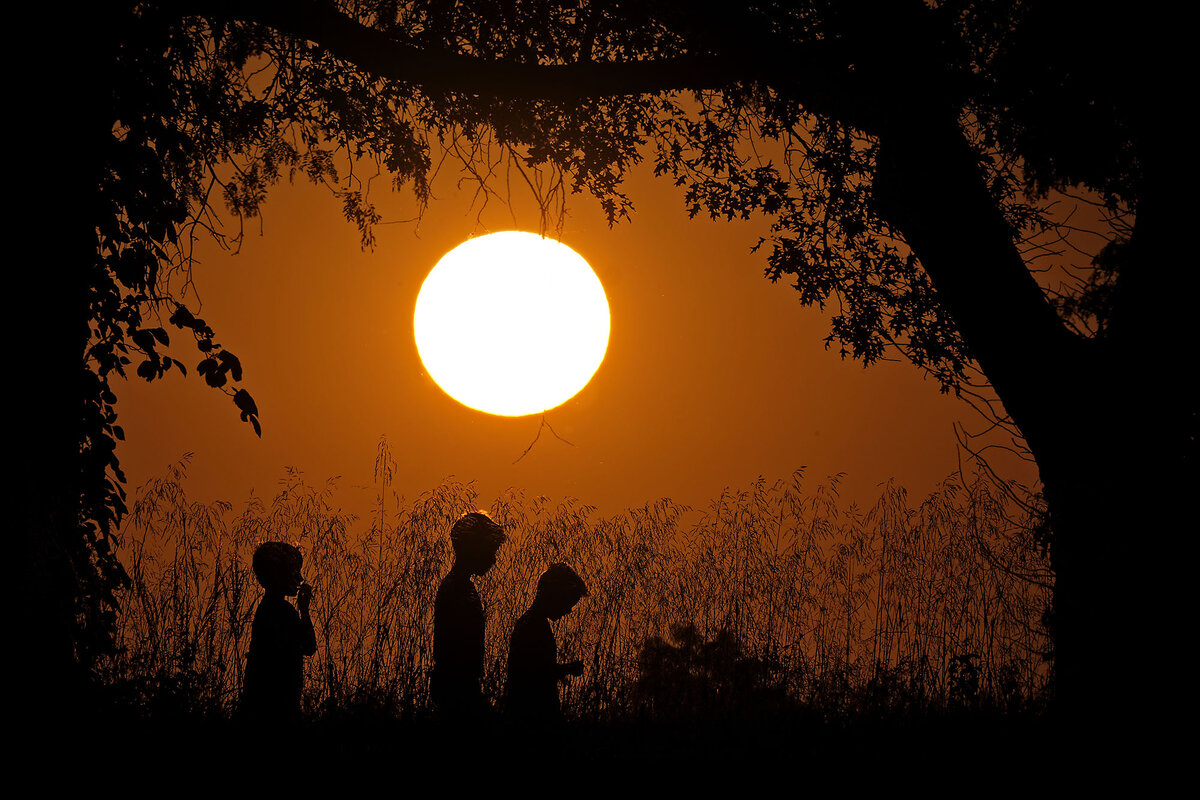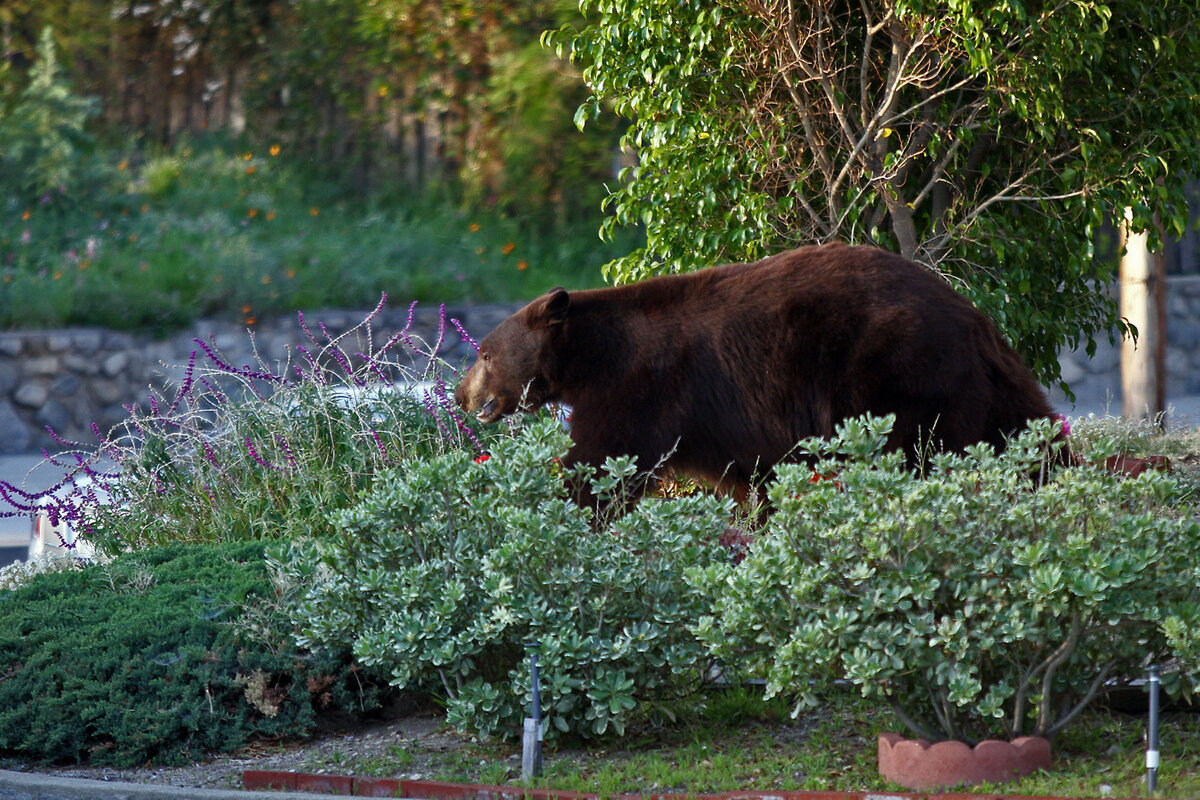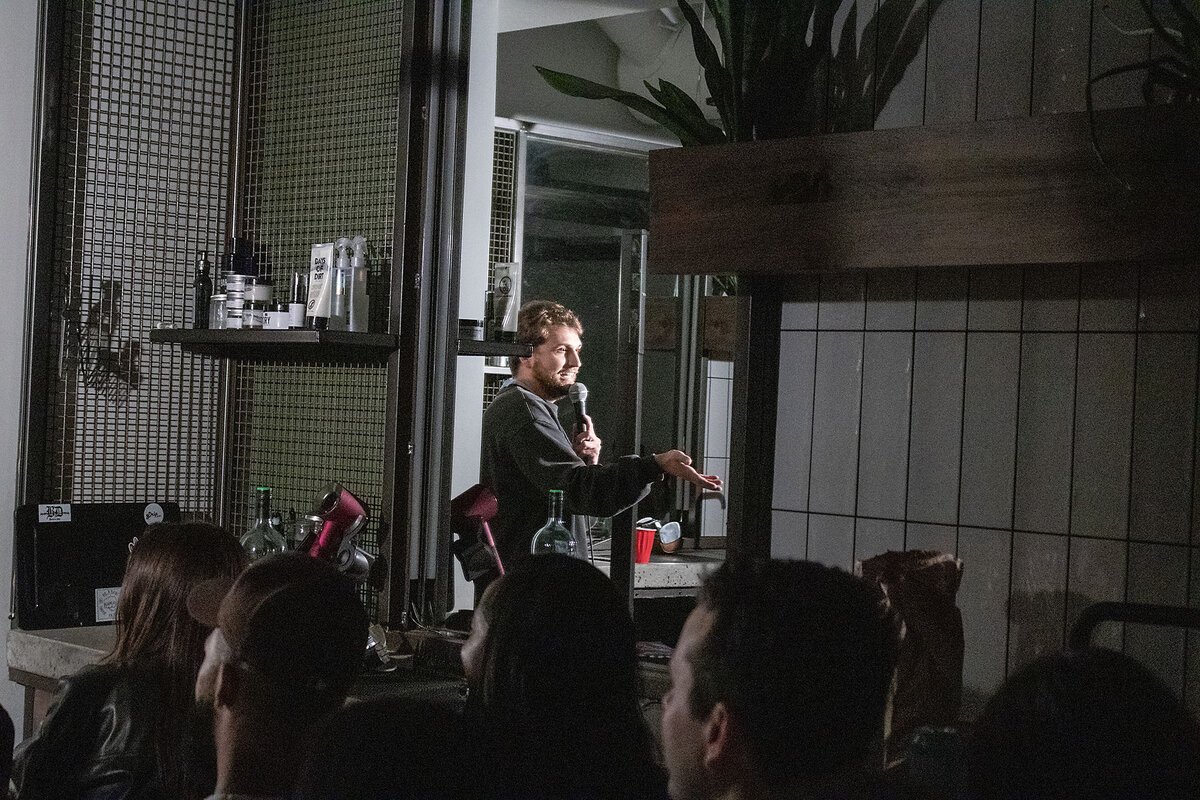During the Trump and Biden administrations, young women lurched left on abortion, the environment, and guns, in contrast to young men. News events drove some of those shifts, along with Generation Z’s reliance on social media, with its algorithm-driven feeds, for information.

Why is Christian Science in our name?
Our name is about honesty. The Monitor is owned by The Christian Science Church, and we’ve always been transparent about that.
The Church publishes the Monitor because it sees good journalism as vital to progress in the world. Since 1908, we’ve aimed “to injure no man, but to bless all mankind,” as our founder, Mary Baker Eddy, put it.
Here, you’ll find award-winning journalism not driven by commercial influences – a news organization that takes seriously its mission to uplift the world by seeking solutions and finding reasons for credible hope.
Explore values journalism About usMonitor Daily Podcast
- Follow us:
- Apple Podcasts
- Spotify
- RSS Feed
- Download
 Mark Sappenfield
Mark Sappenfield
Story Hinckley does something important in her article today. She looks not at an event or an idea, but at a trend in thought.
Polls and research suggest a shift in how many American women view politics. Most news stories would summarize: “American women move left.” But it’s far more nuanced and interesting than that. The political change is one effect. The cause – the thought – is larger.
Journalism that deals only with facts and events never gets to cause. Exploring changes in thought is one of the most powerful things journalism can do. Then, you’re not accumulating information, you’re gaining understanding.
Help fund Monitor journalism for $11/ month
Already a subscriber? Login
Monitor journalism changes lives because we open that too-small box that most people think they live in. We believe news can and should expand a sense of identity and possibility beyond narrow conventional expectations.
Our work isn't possible without your support.
Today’s stories
And why we wrote them
( 6 min. read )
Today’s news briefs
• Israel strikes Hezbollah headquarters: A series of explosions was the most powerful seen in Beirut in the past year, leveling multiple buildings.
• European Union on Ukraine: The EU has decided to take more responsibility for what it sees as an existential threat to security in its neighborhood, not waiting for the United States to lead.
• Hurricane Helene arrives: The storm hit Florida’s sparsely populated Big Bend region as a Category 4 hurricane, bringing storm surge and high winds before moving into Georgia.
• Adams pleads not guilty: New York City Mayor Eric Adams, a Democrat, enters the plea a day after prosecutors revealed charges alleging that he accepted overseas travel and illegal campaign donations.
• Japanese prime minister: Japan’s governing party picks former Defense Minister Shigeru Ishiba as its leader, setting him up to become prime minister next week.
( 5 min. read )
A respite room at the National Museum of the Marine Corps represents growing recognition of the need for subtler ways to allow tough veterans to grapple with wounds of war.
Podcast

Fluency, curiosity, and a bike: Letting Taiwan tell its own story
The story of China and Taiwan is often framed in terms of what China might do next. Our reporter went to Taiwan to report a deep story on Taiwanese perceptions of their collective identity and aims. She joined our podcast to talk about it.
A Fuller View of Taiwan
( 5 min. read )
The proliferation of bear sightings in the nation’s second-largest metropolitan area creates viral videos and TV news fodder that charm humans. And underlying the excitement is an environmental victory.
( 5 min. read )
Comedy’s cultural influence has never been higher. For millennials and Generation Z, humor is one of the main ways they connect with others – the way music was for earlier generations.
The Monitor's View
( 3 min. read )
In September, the junta that has ruled Myanmar since a 2021 coup began to draft young women into the army. That may seem like an embrace of equality. It is not. The military top brass still reflects deep patriarchal traditions. The coup leader has criticized women for wearing pants during past protests for democracy.
Women account for nearly 1 in 5 of those killed by the junta since the coup. About a fifth of political dissidents in detention are women, notably Nobel laureate Aung San Suu Kyi, whose elected government was overthrown nearly four years ago.
The military is drafting women out of desperation for new soldiers. Young men are fleeing a widening net of forced conscription, or soldiers are defecting from the ranks. One reason: The civil war is slowly being won by armed militias of a pro-democracy coalition formed after the coup. The military now controls fewer than 100 of Myanmar’s 350 towns.
Yet another reason may be that one of the world’s longest-running violent conflicts is focused on civic equality. The promise – and lately the reality – of equal treatment for women has proved to be a great motivator in the fight for a civilian-run democracy.
“A young generation, particularly women, are at the forefront of Myanmar’s armed and non-violent resistance,” stated the International Crisis Group in a report earlier this year, “challenging longstanding age and gender norms and hierarchies.” The war’s outcome may be uncertain, the report found, but “Changing norms within the anti-military resistance may well shape politics and society more broadly.”
Whether women operate in all-female militias or in support roles, their participation in the pro-democracy groups governing much of the country is unprecedented in Myanmar’s history. Gender discrimination is still evident in much of the resistance. Only about a fifth of the Cabinet members in the National Unity Government that controls parts of liberated territory are women. Still, “Norms have been challenged and women feel more empowered to take part in politics,” one woman in the Bamar People’s Liberation Army told Crisis Group.
Radio Free Asia reports that many women have taken up arms because they “could no longer tolerate the unlawful killings and arrests of their gender.” One young woman killed during the postcoup protests in 2021 – in which an estimated 60% of demonstrators were women – was Kyal Sin, also known as Angel. For some reason, Angel wore a T-shirt on the day she was shot that read, “Everything will be OK.” The phrase has since become a motto in the pro-democracy movement.
In a public tribute to Angel last year, activist Thinzar Shunlei Yi of the group Sisters 2 Sisters asked rhetorically if this phrase was just naive optimism. “Not necessarily,” she said. Angel knew that all things change. “This is the wisdom of a young person. We know that we will change, and we are determined to have a political system that allows us to breathe and thrive.
“When we hear a young person say, ‘Everything will be ok,’ let us listen to them, let us hear their voice, and let us help them gain the representation that is their birthright.”
A Christian Science Perspective
Each weekday, the Monitor includes one clearly labeled religious article offering spiritual insight on contemporary issues, including the news. The publication – in its various forms – is produced for anyone who cares about the progress of the human endeavor around the world and seeks news reported with compassion, intelligence, and an essentially constructive lens. For many, that caring has religious roots. For many, it does not. The Monitor has always embraced both audiences. The Monitor is owned by a church – The First Church of Christ, Scientist, in Boston – whose founder was concerned with both the state of the world and the quality of available news.
( 3 min. read )
As we learn about the spiritual reality of life, we perceive and experience more of our inherent health and wholeness.
Viewfinder

A look ahead
Thank you for joining us today. Next week, we’ll have a story about Chief Justice John Roberts. Legal experts are parsing the legacy of the most legacy-minded justice in the wake of decisions he authored, most especially Trump v. United States.
Also, a quick note: A Sept. 16 story about a more inclusive approach to tango in Argentina misspelled a surname. Here is the correct spelling for Mariana Docampo, a pioneer of Buenos Aires’ queer tango scene.







